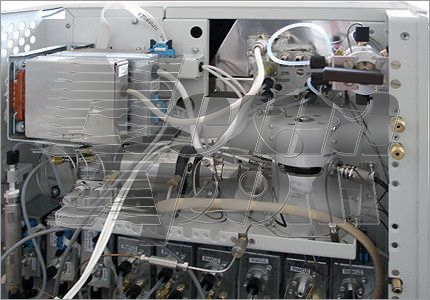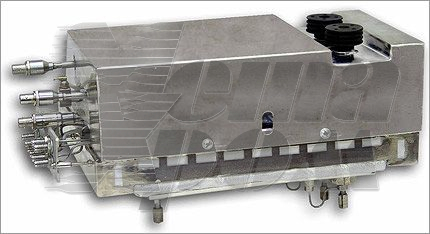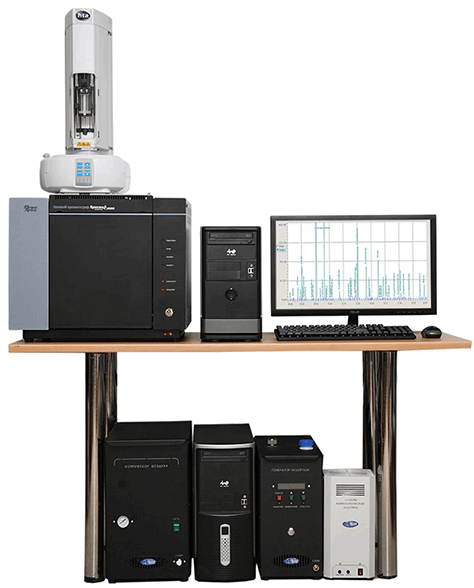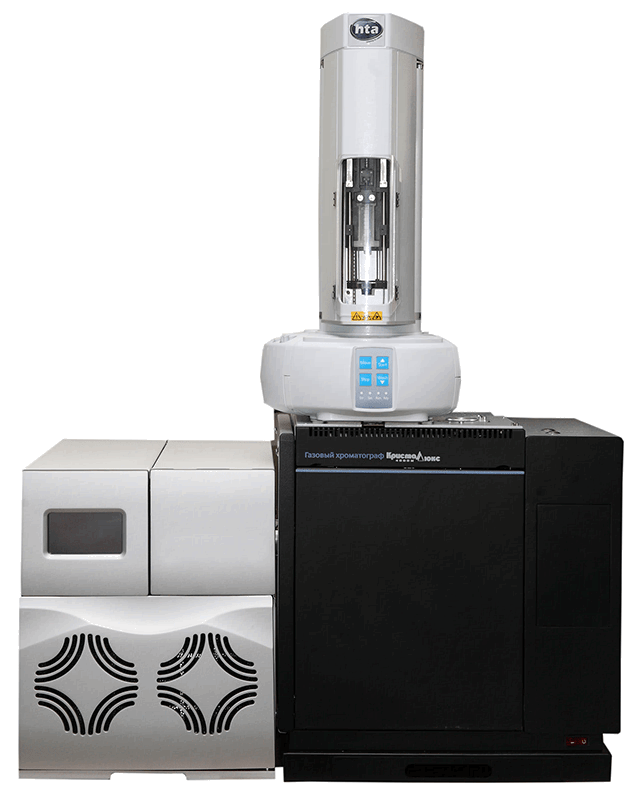Analytical modules
Analytical module
The analytical module determines the configuration of the chromatograph, which is selected for the task specified by the customer. analytical module includes up to 3 detectors and 3 injectors, sampling and switching valves, methanizer and a lot of additional equipment
The following types of detectors can form analytical modules:
| Detector | Description | Limit of detection |
| FID — flame ionization detector. | FID functioning is based on ionization of analyzed compounds due to carbon oxidation when burning them with hydrogen flame. The most widespread universal detector suitable for the analysis of a wide range of organic compounds. The sensitivity depends mainly on the number of carbon atoms. In combination with a methanazer allows the analysis of carbon oxides at a level of 0.1 pm. The fluctuation noise level is up to 50 μV, the maximum signal is up to 2500 V. | 1.1*10-12 gC / s for hydrocarbons |
| TCD — thermal conductivity detector (catarometer). | TCD functioning is based on the change of the conductor electrical resistance depending on the thermal conductivity of the environment (eluate). The most universal detector with two sensitive elements and automatic protection against burnout. TCD has a much lower sensitivity in comparison with FID, but it is irreplasable for the determination of constant gases (helium, hydrogen, oxygen, nitrogen, argon, etc.). A distinctive feature is an extended dynamic range, in fact, from 20 μV to 20 V and full automation of measurement, including current setting, compensation of initial zero offset, switching of measurement limits. It is produced in several modifications, both in terms of volume and design of sensitive elements. The fluctuation noise level is up to 20 μV, the maximum signal is up to 20 V. | -1*10-9 g/ml for geptane |
| ECD — electron capture detector. | ECD functioning is based on the capture of thermal electrons by electronegative particles of analyzed compounds and formation of negative ions. The number of captured electrons depend on the mass and structure of the analyzed compound. Selective detector for organochlorine compounds and other halogens. Also sensitive to compounds containing oxygen, phosphorus or aromatic rings, but to a lesser specificity. Paraffins and simple hydrocarbons are not registered. Selectivity to hydrocarbons is 108. It is produced in two versions - conventional ECD and micro-ECD, mainly for capillary columns (the second version is characterized by higher sensitivity). The fluctuation noise level is up to 300 μV, the maximum signal is up to 5 V. The ECD design allows using argon, helium, hydrogen as a carrier gas, in addition to nitrogen. | 1.7*10-14 g/sec for y-BHC |
| FPD — flame photometric detector. | FPD functioning is based on activation of analyzed compounds by flame. When activated molecules are back to their basic state, it causes light emission at a certain wavelength that is typical for this particular compound. Selective detector for organophosphorus and sulfur compounds. It is mainly used for the analysis of sulfur-containing substances (hydrogen sulfide, mercaptans, thiophenes, etc.). The sulfur sensitivity reaches 0.1 ppm. In addition, PPD has sufficient sensitivity and selectivity to compounds containing nitrogen, boron, tin, chromium, selenium, germanium, as well as CO, CO2, N2O4, SO2, N2F4, HF, CS2. The selectivity of S-containing compounds for hydrocarbons is 105. | 1*10-13 gP/sec for metafose 8*10-13 gS/sec for metafose |
| NPD (TID) — nitrogen phosphorus detector (thermionic detector) | TID functioning is based on ionization of organic molecules containing nitrogen, phosphor, arsenic, some halogen, stannic and sulphur atoms in the presence of the vapour of alkaline metal ions. Selective detector for organophosphorus and nitrogen compounds. It is also sensitive to compounds containing Cl, As, but to a lesser extent. The sensitivity depends on the number of heteroatoms in the molecule. Selectivity to hydrocarbons is 104 for nitrogen and 105 for phosphorus. | 3*10-14gP/sec for metafose 5*10-13 гN/с gN/sec for azobenzene |
| PID — photo ionization detector. | PID functioning is based on ionization of molecules of analyzed compounds caused by their absorption of vacuum ultra-violet radiation. Compounds which ionization potential is less than the radiation energy are ionized.Partially universal detector. It is used for the analysis of most organic compounds, incl. aromatic and aliphatic (except methane) hydrocarbons, heterocyclic compounds, phenols, phthalates, pesticides, amines, ketones, aldehydes, ethers, mercaptans. It does not register compounds with an ionization threshold above 10.2 eV (for example, acetonitrile, methanol). | 5*10-13 g/sec for benzene |
| Thermochemical detector (TChD) | The principle of operation is based on recording the thermal effect of catalytic combustion of a sample on the surface of a platinum filament. It is used for the determination of hydrogen, oxygen, CO and combustible hydrocarbon gases, and its sensitivity to these compounds is higher than the sensitivity of an accident. TCD is most widely used for the analysis of hydrogen and oxygen, because its sensitivity to them is almost an order of magnitude higher than that of an accident. | 1.8*10-10 g / ml for hydrogen |
| HID - Helium detector | It operates in the mode of a helium ionization detector (HID) and is considered the most sensitive device for determining constant gases. In addition, it is capable of operating in the ECD mode. | 2*10-13 gC/sec for methane |
On the customer request there could be developed module with any detector set and sample input devices.
Submit application
You may be interested
Our partners






































